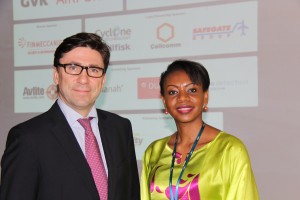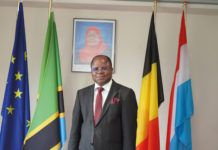 Background
Background
The African Development Bank (AfDB) is a multilateral financial institution created to promote sustainable economic growth in order to reduce poverty in Africa. Established in 1963 by a group of five African nations, the bank has grown to incorporate all African Regional Member Countries (RMC’s) and 24 Non-Regional Members, including the USA. The AfDB continues to open local offices across the continent, providing the bank with a distinct advantage in understanding its member countries and their challenges. Since 1964, the bank has funded more than 54 billion USD in projects access the continent.
AfDB Structure
The African Development Bank Group consists of three lending entities: the African Development Bank, which lends at market rates; the African Development Fund, the bank’s concessional arm; and the Nigerian Trust Fund. The majority of the bank’s grants and loans are disturbed through the public-sector window of the bank in line with the development priorities outlined in each RCM’s Country Strategy Paper. AfDB also has a private-sector window that plays an important role in stimulating economic growth and development in Africa through the development of private infrastructure projects and public-private partnerships. The AfDB also hosts the Secretariats for the Infrastructure Consortium for Africa and the African Water Facility and a support unit for the New Partnership for Africa’s Development. Information about the bank’s structure and key contacts can be found on its website, www.afdb.org under “About Us”.
AfDB Sectors
The AfDB finances projects in infrastructure, agriculture, health, education, public utilities, transport, telecommunications, industry, and the private sector.
The AfDB does not finance military equipment; raw or manufactured tobacco; nuclear reactors, parts, or radioactive matter; pearls, previous stones, or metals, or any environmental hazardous products.
How to Do Business with AfDB
It is important to understand how the AfDB works and what it does. The AfDB Website, www.afdb.org, provides information on approved loans and procurement opportunities. It also provides information on the bank’s country specific development strategies, regional socioeconomic data, press releases, a calendar of bank-sponsored events, and other useful information.
Lean How the AdFB Works
Roles of Borrowing/Non-Borrowing Countries
Only firms from both borrowing countries (all African RMC’s) and non-borrowing member countries (such as France, Italy and the USA) are eligible to compete for contracts for AfDB funded projects.
Borrowing countries have ministries or agencies called “executing agencies” that implement projects. These agencies have the following roles:
- To originate public sector projects for presentation to AfDB headquarters, with the final decision on loan approval to be made by the AfDB board of executive directors
- To make key decisions throughout the project cycle, including planning the project and conducting all aspects of the procurement capital
Borrowing countries are also expected to provide a portion of the costs of the entire project, some times in the form of human capital.
Roles of AfDB Staff:
- Bank staff is responsible for monitoring projects to ensure that bank guidelines and policies, including procurement policies, are followed.
- Each department assigns specific project team leaders as primary points of contact for each project
- In general, AfDB’s board of executive directors, while staff located in borrowing countries is responsible for eth supervision of projects that are being implemented.
The Project Cycle
The project cycle at the AfDB begins with the identification of potential projects to meet development needs in the borrowing countries and ends with post-implementation evaluation, a process that takes years.
- In the identification phase, broad issues and parameters of a project, such as project cost and executing agency, are identified.
- During the preparation phase, details of the project are further developed. This works tents to be done by the executing agency, with the assistance of AfDB staff at headquarters.
- Once the AfDB board of executive directors approves the loan, the project goes into the execution, or implementation phase. The borrowing country is responsible for execution of the project, including all procurement. Therefore, in most cases, firms bidding on or participating in AfDB-funded projects will be working most closely with the borrower, not the AfDB staff.
There are potential business opportunities for companies during each phase, and it is important for firms to start business development and marketing activities in the early project development phase. Firms should develop and follow a strategy regarding the project cycle. For example:
- – Small companies may wish to focus on trying to get business during the project preparation cycle, which offers small contracts.
- – Larger firms may choose between project preparation and project implementation work (doing preparation work my preclude a firm from working during the execution phase)
- – Some firms may choose not to do project development work, but focus instead on marketing their solutions to a government with the aim of having their products or services incorporated into the executing agency’s project plans
In next CBL-ACP recue: Identify Projects with potential opportunities, identify specific tenders, learn the procurement rules, consultants.
Alexander Herring
Board and Executive Committee Member
Advisor Financing Division
PSLO World Bank Group
Sources: www.afdb.org; US commercial Service – advocacy center



